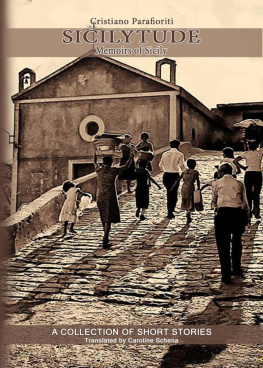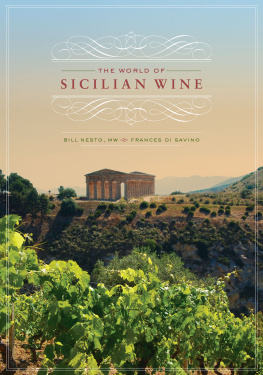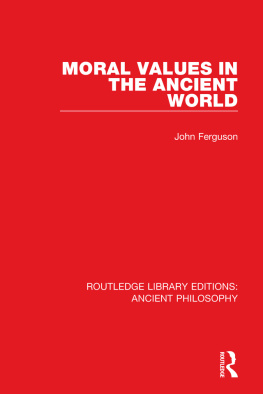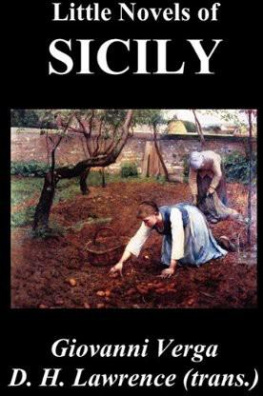
Sicilytude - Memoirs of Sicily
Cristiano Parafioriti 2016
Cover photo
by Nunzio Di Dio
Book illustrations
Daniele Piscopo and Alessandra Drago
Layout and editing
Salvatore Lecce
Graphics
Joe Vicario

CRISTIANO PARAFIORITI
SICILYTUDE
MEMOIRS OF SICILY
A collection of short stories
Translated by Caroline Schena

A UTHORS NOTE
This is a work of fiction. The characters, organizations and circumstances mentioned in this book are the result of the author's imagination or used for narrative purposes if real. In any case, all references to real events and people are to be considered purely coincidental.
To my mother,
the source and light of my Sicilytude.
PREFACE
A tlases say that Sicily is an island and this must be true since they are honorable and reliable books. However, we could easily question the issue since the island concept usually refers to a distinctive cluster of race and traditions, while everything here is odd, varied and changing, like the most different types of contents. There are many Sicilies and we may never be able to count them all. There is the green Sicily of the carob trees, the white one of the salt mines, the yellow one of the sulfur, the blond one of the honey and the purple one of the lava. There is the "lenient" Sicily, so submissive as to seem silly, but there is also the "expert" Sicily, a very cunning Sicily dedicated to the most utilitarian practices of violence and fraud. There is also a lazy and frantic Sicily; the first is fading out of anguish, while the second recites life as if it were the script for a carnival show. And, finally, there is the Sicily that sticks out from a windy ridge to unveil a dazzled sensation of delirium...
Why are there so many Silicies? Simply because, over the centuries, Sicily was fortunate enough to become a sort of bridge between the great Western Cultures and the temptations of the deserts and sun; a link between reason and magic, but also between a variety of feelings and heat waves of passion. Sicily is suffering as a result of the many identities it assumed over time and Im not sure whether this is supposed to be good or a bad. The joy of feeling as if sitting on the world's navel quickly vanishes for those whom are born here, overtaken by the suffering of not being able to overcome the thousands of curves and bloodlines, or threads of one's destiny. [1]
In the framework of the Multiple Island depicted by Gesualdo Bufalino and dominated by strong contrasts immersed in a constant polarity of light and shadows, between history and myths or hospitality and isolation, Cristiano Parafioriti's collection of short stories speaks of the significant distinctiveness of one of the One Hundred Sicilies evoked by the writer from Comiso, Sicily. The stories thus constitute further evidence, in case any was still needed, of how the Sicilytude of each memory or isolation if you prefer - of Bufalinos origin has greatly contributed to contemporary literature in the form of "human comedy."
Based on a corner of Sicily called Galati Mamertino - a village in the province of Messina, standing on top of a mountain in the heart of the Nebrody region and stretched out in the shape of an eagle perched in the middle of the woods and overlooking the Fitalia valley - Parafioriti's stories preserve a strong evocative resonance as well as a significant metaphorical value. A kaleidoscope of life stories and past experiences stand out from the background of a Galati represented throughout different historical periods: from World War I to the last decade of the 900s. This gallery of faces and people is sometimes the result of the author's creative imagination, but also part of the memory that constitutes both the main theme of his various stories and the original trigger that feeds his lively narrative streak.
In light of this, it is not unusual to see the Author's name next to the ones of the many "intellectual Sicilians who were subjected to a massive dispersion" in search of work; thus forced to leave their homeland, the island-world, accompanied only by a poignant feeling of nostalgia. During their lifetime, writing became an essential exercise that allowed them stay connected with their roots and to keep their identity intact. They wrote - through the skillful characterization of characters and environments - in a way as to allow the distinctive Sicilian traits and marks to continue on generating new visions and narratives.
In the wake of the positive results achieved with his first book, the collection entitled " My Town, My People ," which was translated in various languages, Parafioriti can now call himself a talented writer with the addition of his new literary work. He is capable of engaging - in an almost choral dimension - the readers of his stories by making them feel like a part of an autobiographical experience that is strictly linked to the history of Galati Mamertino. In fact, the stories of his characters, which occurred over different time periods, were based on the districts, alleys, suburbs, churches, monuments and landscapes of this town.
The characters of his stories are indeed based on this rural world whose socio-economic landscape was characterized by the misery, exploitation, baronial oppression and harsh country life that eventually led to a high incidence of migration. However, the author managed to restore the profound humanity and dignity of these people by turning them into the protagonists of stories of paradigmatic values; represented through a set of different perspectives, mentalities, desires and frustrations. After all, these stories represent the Country's soul : its places (the Pilieri district, the village of St. Basil, Rafa, etc.) and its symbols of identification (the Crucifix, square of St. Giacomo, Mother Church, religious traditions, etc.). A country full of charm and flamboyant nature, but also of breathtaking landscapes amongst the forests and mountains that gently unfold to reveal the marvelous view of the sea and Aeolian Islands. Nonetheless, this "soul" is contrasted by the reality of a wretched existence and by the hard work required on the steep mountain lands, but also by the harshness of the winter weather and by the general sense of isolation and backwardness that have marked this land over time. These are the life stories of the great children, men and women of that microcosm... of their mental and physical achievements, feelings, habits and daily routines. Throughout the narrative, the fragments of a diversified humanity emerge and blend to compose the Countrys "biography" over time. This was made possible thanks to the Author's ability to provide a vivid representation of the anthropological insight of this mountain community and to his astute awareness of the local historical frameworks.
Parafioriti is a storyteller who is motivated by an authentic literary vocation capable of simulating sounds and of assimilating the ways, artificiality and shapes of spoken words. The style of his stories is consistent, devoid of any dichotomy between the narrative and vocabulary used: through the Author, the words, characters and contexts become a single unbreakable element. As specified in the beginning, these narratives are inspired by strong and evocative voices. Thanks to his ability to artificially reconstruct a universe through words and to reproduce the feelings and memories that have been forgotten over time, the author's strong desire to emulate these stories engages his readers by reactivating their memory.
Next page













